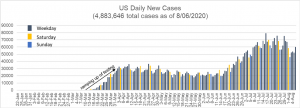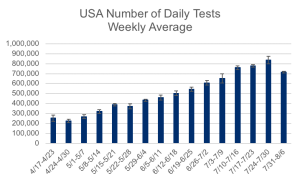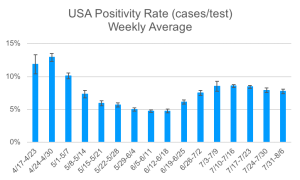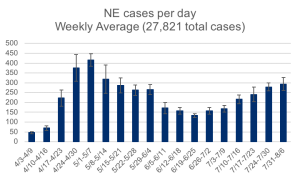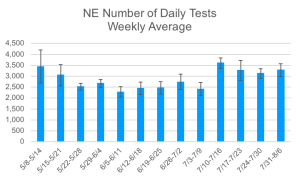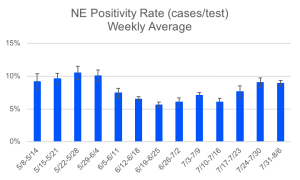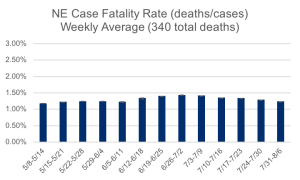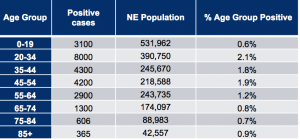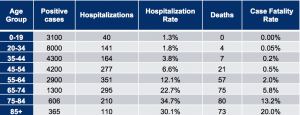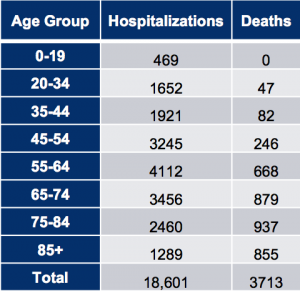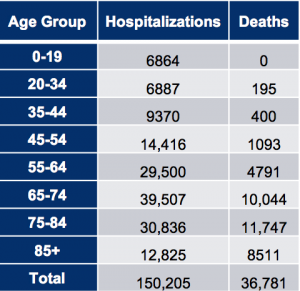#CampusClear now available through web interface | Video shows proper hand-washing techniques | Library study spaces available | Kiewit Fitness Center opens today with several modifications | Temperature Check-In/Screening Station opens at law school parking lot | Timothy Simeone, PhD, in the School of Medicine, offers COVID-19 graphs
#CampusClear Now Available Online
#CampusClear now has a web interface, which allows users to complete the self-screening online. All members of the Creighton community – faculty, staff and students – should now be completing the self-screening daily, regardless of their status, whether they are learning or working remotely or on campus. Read more about #CampusClear and the installation instructions.
Hand-washing Techniques Shared
This semester, we are all being asked to be more vigilant about basic health practices to limit the spread of COVID-19. Frequent and thorough hand-washing is a critical part of that effort.
Carrie Hoarty, MD, director of Student Health Education and Compliance, demonstrates proper hand-washing techniques in this video with Leah Georges, PhD, assistant professor in Creighton’s EdD program in interdisciplinary leadership, and Charles Auguste, a student in the Heider College of Business. Please watch the video.
Library Study Spaces Available
The Reinert-Alumni Memorial Library is offering a limited number of modular study spaces for the fall semester. Students can reserve space online at https://creighton.libcal.com/reserve/reinertstudyrooms.
The Reinert-Alumni Memorial Library (RAL) and the Health Sciences Library (HSL) are also reserving booths for individual study.
• Reserve spaces in RAL: https://creighton.libcal.com/reserve/reinertlibrary
• Reserve spaces in HSL: https://creighton.libcal.com/reserve/spaces/hslseats
Please note that face coverings must be worn at all times in Creighton’s libraries and across campus.
Kiewit Fitness Center Opens Today
Recreation and Wellness plans for a phased reopening of its facilities and programs, beginning with the reopening of the Kiewit Fitness Center today at noon. Several modifications will be in place. Access to the KFC will be by appointment-only during this first phase. Faculty and staff who have been approved to be on campus as “on-premises” or “reduced on-premises” can sign up for blocks of time, each of which will be preceded by a thorough cleaning. Patrons must also wear a face covering while inside Creighton’s recreation facilities.
Temperature Check-In/Screening Stations Opens at Law School
A general campus Temperature Check-In/Screening Station opened today at the School of Law, in the covered parking area on the northeast side of the building.
It joins the general campus screening station currently open at Anderson Plaza on the east side of the Hixson-Lied Science Building. Another will open in the Brandeis courtyard on Aug. 17. The screening stations are open from 7:30 a.m.-2 p.m., Monday-Friday.
COVID-19 Graphs
Click on each graph for a larger view.
Increasing testing capabilities throughout March enabled the identification of viral spread throughout the USA. The number of daily positive tests peaked in early April. As states shut-down activities and people sheltered-at-home, there was a 30% decrease in cases. In late June and throughout July positive cases increased by 100% over April numbers largely fueled by outbreaks in Florida, Texas, Arizona and California. This past week average daily cases declined suggesting individual adherence to cautionary measures is beginning to impact the spread of the virus.
For ease the data are presented as weekly averages beginning from early April.
Testing capacity fell slightly this week.
The rate of positive cases, which is just the daily positive cases divided by the daily number of tests, began to decrease. It actually fell below the 5% threshold for opening for a couple of weeks, but then rose despite the increase in testing indicating a real increase in virus spread. The positivity rate now appears to have a slight downward trend as the number of cases levels and testing continues to increase. This suggests that the scope of the outbreaks can now be determined and properly managed.
The expanded testing is now capturing positive cases that have minor symptoms and are not high-risk patients; therefore, the case fatality rate is falling daily from a high of 6% to 3.28% on Aug. 6. Recent studies estimate the actual case fatality rate is 0.6-1.5%.
Nebraska’s number of daily cases continue to increase.
Nebraska’s daily testing remains steady.
Nebraska’s positivity rate is increasing suggesting the recent increase in daily cases reflects increased spread of the virus. It also suggests increased testing is needed to determine the true scope of infection.
Nebraska’s case fatality rate has been holding steady and is lower than the nation as a whole.
The percentage of the nation’s population that has tested positive for COVID-19 is 1.49%. The percentage of the Nebraska state population that has tested positive is 1.44%.
What is the distribution of positive cases in Nebraska based on age groups?
This means that 2.1% of Nebraskans aged 20-34 have tested positive, whereas 0.6% of children have tested positive, etc. It also indicates that most positive cases have occurred in college and working age adults.
What age groups of Nebraskans are hospitalized and susceptible to death induced by COVID-19?
This means that though most Nebraskans have a very low chance of dying when infected by COVID-19, if they pass it on to the elderly, either directly or indirectly, there is a high probability that a grandparent will die.
COVID-19 has a hospitalization rate and mortality rate. These facts mean any increase in positive cases will result in more people, of all ages, requiring hospital care and more deaths. As an illustration of these facts consider this thought experiment: Even with a vaccine, the flu still infects up to 15% of the population per year. The flu vaccine not only helps reduce infection rates, but also severity and mortality. What if the total COVID-19 positive cases reaches 15% of the NE population before a vaccine is widely available? Based on current Nebraska infection distributions, hospitalization rates and mortality rates how many will require care and how many will have died?
What if 100% of the Nebraska population is infected?
We are all needed to prevent this from happening. We do not need to do anything extraordinary to be heroes, we just need to take responsibility for our individual actions and embrace our compassion for others.
